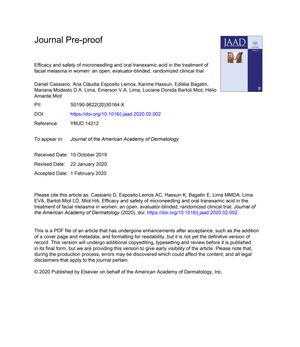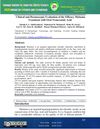Efficacy and Safety of Microneedling and Oral Tranexamic Acid in the Treatment of Facial Melasma in Women: An Open, Evaluator-Blinded, Randomized Clinical Trial
February 2020
in “
Journal of the American Academy of Dermatology
”

TLDR Microneedling and oral tranexamic acid both improve facial melasma, but microneedling shows more sustained benefits.
The study compared the efficacy and safety of microneedling and oral tranexamic acid (TA) in treating facial melasma in 64 women. Participants were divided into four groups: microneedling (M), oral TA (T), both treatments (MT), and control (CT). All groups showed improvement in the Modified Melasma Area Severity Index (mMASI) at 30 and 60 days, with the MT and T groups showing early improvement. At 60 days, the M, T, and MT groups performed better than the CT group. However, at 120 days, the T group performed worse than the CT group. Quality of life scores improved across all groups, with early results in the M and MT groups. Adverse effects included nausea, abdominal pain, hair loss, and blurred vision for TA, and herpes simplex in three patients after microneedling. Both treatments enhanced the performance of the triple-combination cream, with microneedling promoting sustained remission. Different regimens of microneedling and TA should be explored for maximizing benefits.


